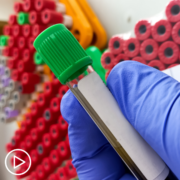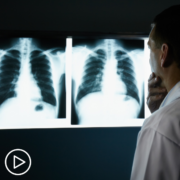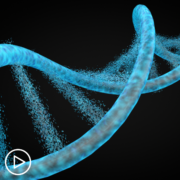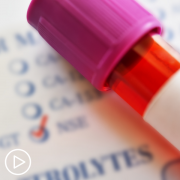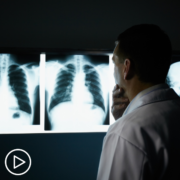Closing the Gap | Ensuring Equitable Access to Lung Cancer Biomarker Testing
Closing the Gap | Ensuring Equitable Access to Lung Cancer Biomarker Testing from Patient Empowerment Network on Vimeo.
How is biomarker testing implementation going in lung cancer care? Expert Dr. Samuel Cykert from UNC School of Medicine discusses biomarker testing trends, challenges, and proactive advice for patients.
Download Resource Guide | Descargar guía de recursos
See More from [ACT]IVATED Non-Small Cell Lung Cancer
Related Resources:
Transcript:
Lisa Hatfield:
Dr. Cykert, can you provide an overview of the current landscape of biomarker testing implementation in lung cancer care, and highlight any key trends or challenges that you’ve identified in your research or practice?
Dr. Samuel Cykert:
Yes, if you look at the history of innovations in cancer treatment, patients of color, especially Black patients and Native Americans, also always get exposed to the innovation late compared to other patients, and I don’t want that to happen for biomarker testing and treatments, just because some of the results, especially in lung cancer are so, so good. And so what I would say right now is, number one, for advanced cancer, there are already data that show that people of color are falling behind in both initial testing and subsequent testing.
So we really, really have to work on that. But a second thing that’s happening on the innovation front, is there was a study published in the New England Journal of Medicine, just about a year-and-a-half ago, that showed that biomarker testing and treatment could possibly be effective in early curable lung cancer, something called neoadjuvant therapy, where you actually treat patients with the biologic treatment before surgery. In this case, it’s a kind of immunotherapy that works better, it works really all throughout different types of cancer, but with one particular biomarker PD-L1, it works really, really well. And so it’s looking more and more like biological treatments and testing for lung cancer are going to make a big difference.
Lisa Hatfield:
Great, thank you. I do have a quick follow-up question to that too, when I put my patient lens on, so when you talk about the biomarker testing, are all of those biomarkers tested by biopsy or can they be done via blood test, and if a patient didn’t have them done on initial diagnosis, is it possible to have it done after a patient has been diagnosed, if it wasn’t done originally, can they go back and look at that tissue to see if those biomarkers are there?
Dr. Samuel Cykert:
Yes. Right now they’re pretty much all done on tissue specimens, and so it’s important to think about it upfront because obviously you don’t want to go through a biopsy twice if you don’t have to, but it is true that as long as there’s enough tissue taken at the initial biopsy, that preserved tissue can be tested later for other biomarkers that haven’t been done.
Share Your Feedback
Create your own user feedback survey


